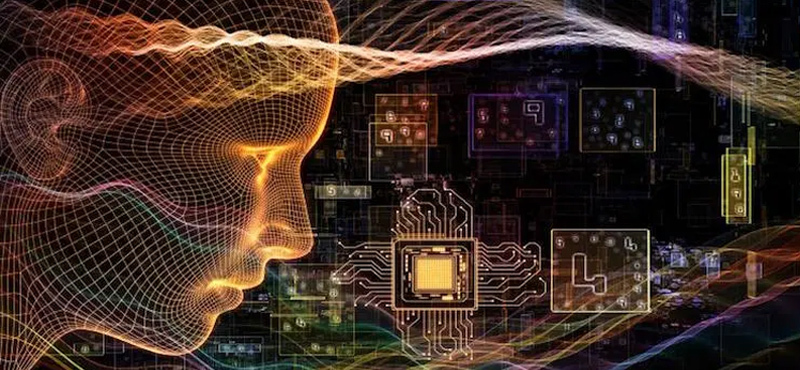“We are made of light photons, quantum electromagnetic energy, all within and around us. Live your life as such. To play it small is truly against our nature and non-beneficial to our physical, emotional and spiritual well-being.
Why do anything against our very nature when we can take the step and leap into our greatness? It is effortless to live a life for and in support of life. Show us your light, represent your truth and never back down. Let us hear you roar, while you show us your light.
Demonstrate your truth and set the way aglow for all. Society will follow in your footsteps, and all shall ignite in ecstatic high-vibrational energy and joy.
Yes, we shall reclaim our birthright. It is happening and it is here. Now is the moment to glow.”
― Ulonda Faye
Our understanding of the brain and its functions has been confined to the electrical impulses generated by nerve cells (neurons) that process and store information. The impulses, or signals, pass along nerve fibers within the brain.
The amount and type of brain activity that occurs, and where in the brain it begins, depends on the person’s level of consciousness, and on the specific activity the person is doing.
The brain consists of three main parts:
- Cerebrum
- Brain stem
- Cerebellum
Each part has a number of smaller regions, each with specific functions.
But this traditional understanding of brain function has become outdated, prompting scientists like Matthew Fisher₁ to ask whether we are quantum computers.
Some modern physicists have tried to explain brain processes with hypotheses unprecedented in neurosciences. One of these hypotheses is quantum.
From the point of view of quantum physics, it is not only the past and the present that shape the future, but the future as well, this is the most important point of quantum retrocausality theory.
Retrocausality₂ is a hypothetical concept in physics that suggests that an effect could occur before its cause. In other words, retrocausality proposes that the future could influence the past. This idea challenges the common understanding of causality, which states that causes must always precede their effects.
Retrocausality is not a mainstream concept in physics and is not supported by current scientific evidence. However, some physicists have explored the possibility of retrocausality in the context of certain interpretations of quantum mechanics, such as the transactional interpretation and the two-state vector formalism. These interpretations suggest that particles can exchange information in both directions in time, making retrocausality a possibility. However, these ideas remain highly controversial and are not widely accepted by the physics community.
While retrocausality remains a hypothetical concept in physics, there have been a number of proposals and theories that have explored the possibility of retrocausality in various contexts.
One proposal is the Wheeler-Feynman₃ absorber theory, which suggests that electromagnetic radiation can be seen as both an outgoing wave from a source and an incoming wave that is absorbed by the source. This theory suggests that the absorber effect could be seen as a form of retrocausality, as the incoming wave could be seen as influencing the behavior of the source in the past.
Another proposal is the Aharonov-Bohm₄ effect, which is a quantum mechanical effect that suggests that the electromagnetic potential can have a non-local effect on the behavior of charged particles, even in regions where the electromagnetic field is zero. This effect has been interpreted as suggesting the possibility of retrocausality, as the potential could be seen as influencing the behavior of the particles in the past.
According to quantum physics, small objects such as atoms have a distortion in time, so whether they are in the future, the past, or the present, this does not change anything for them. The laws of quantum physics and its variables that occur within the atom are the same and do not favor one direction over another, as the future can affect the past and vice versa. Furthermore, we find, for example, Shamans₅ doing spiritual treatments by simulating the past in the present, through which they intend that this would bring about a change in Timeline of the patient’s ancestor and thus cure it!
Here we must refer to quantum entanglement, which has a significant impact on all of the aforementioned. Quantum entanglement is a distinctive physical behavior that occurs inside the atom and links quantum-entangled atomic particles with each other, as what happens inside body A automatically affects body B regardless Looking at the distance separating them makes it change its behavior and its rotation movement in a fraction of a second and at a speed more than the speed of light, as each of them knows the movements of the other, and if they are monitored or just thinking about monitoring them, they change their movement immediately.
Subsequently does our consciousness have power over the movement of atoms around it? Can our consciousness make a change in the past?
¹: https://www.quantamagazine.org/a-new-spin-on-the-quantum-brain-20161102/
²: https://plato.stanford.edu/entries/qm-retrocausality/#Hist
₃: The Feynman Lectures on Physics 1961–1963
₄: Y. Aharonov, D. Bohm, Significance of Electromagnetic Potentials in the Quantum Theory. (The Physical Review. 115, No. 3, 1959), pp. 485-491.
₅: https://scholar.harvard.edu/eric_m_stephen/publications/finding-%E2%80%9Ctheir-own%E2%80%9D-revitalizing-buryat-culture-through-shamanic

